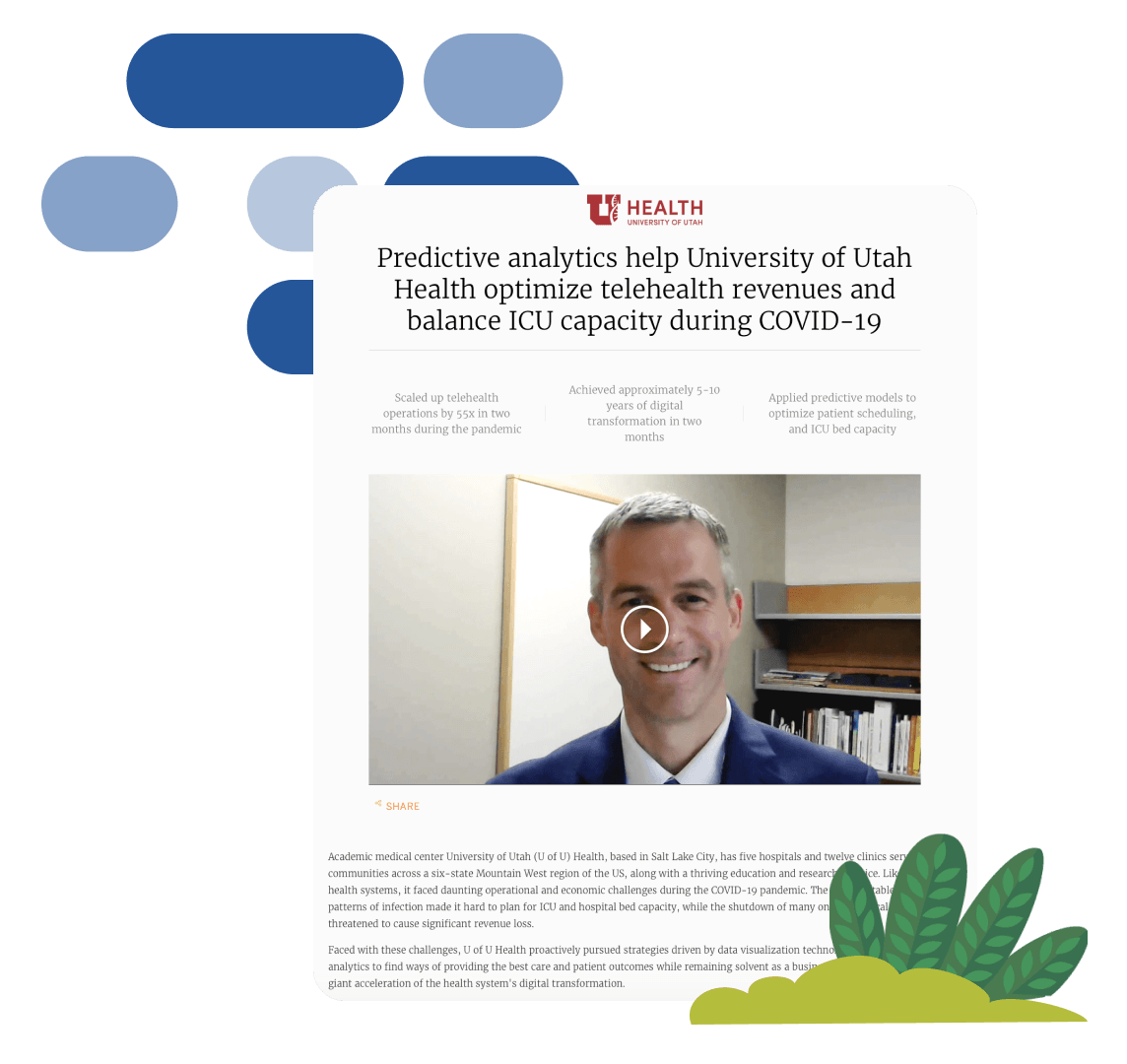Soluciones sectoriales de Tableau
Análisis de atención médica y ciencias biológicas
Análisis para mejorar los resultados y aumentar la eficiencia
Análisis de atención médica eficaz para desafíos complejos
Adaptar la innovación y optimizar la prestación de servicios son objetivos muy importantes para la atención médica. CVS Health se encuentra a la vanguardia de esas iniciativas y usa el análisis para brindar una atención más conveniente, equitativa, personalizada y asequible a sus consumidores.
Ver ahoraAnálisis de atención médica eficaz para desafíos complejos
Adaptar la innovación y optimizar la prestación de servicios son objetivos muy importantes para la atención médica. CVS Health se encuentra a la vanguardia de esas iniciativas y usa el análisis para brindar una atención más conveniente, equitativa, personalizada y asequible a sus consumidores.
Ver ahoraAnálisis de aseguradoras de atención médica
Personalice la experiencia de los miembros, mejore la eficiencia operativa y obtenga visibilidad completa.
Más informaciónAnálisis de proveedores
Desde la sala de juntas hasta la habitación, céntrese más en los pacientes y mejore la rentabilidad y los resultados de la atención médica.
Más informaciónAnálisis de dispositivos médicos
Optimice las ventas virtuales, mejore la gestión de la cadena de suministro y lleve a cabo una transformación empresarial integral.
Más informaciónAnálisis del sector farmacéutico
Acelere la generación de valor con un análisis que aumente la transparencia, la agilidad y la innovación en toda la cadena de valor.
Más información
Historia de cliente
El análisis predictivo ayuda a University of Utah Health a optimizar los ingresos y equilibrar la capacidad de la UCI
Vea cómo University of Utah Health implementó de manera proactiva estrategias impulsadas por la visualización de datos y el análisis predictivo para brindar la mejor atención y los mejores resultados para los pacientes sin dejar de ser solvente como empresa.
Leer la historiaValoramos la experiencia del paciente y los resultados por encima de todo. Tableau nos ayudó a enfrentar los desafíos de optimización durante la crisis del COVID-19 y nos impulsó a usar nuestros recursos de forma más predictiva.
Ochsner Health System: priorizar a los pacientes al visualizar la experiencia de atención
Descubra cómo este sistema sanitario sin fines de lucro usa Tableau para tomar mejores decisiones de atención médica y obtener nueva información sobre las necesidades de los pacientes.
Ver ahoraLehigh Valley Health Network mejora los resultados de los pacientes y reduce el costo de la atención
Dada la complejidad del panorama de la atención médica actual, es más importante que nunca contar con datos en tiempo real para tomar decisiones informadas. Vea cómo Lehigh Valley aprovecha Tableau para ofrecer análisis rápidos, claros y concisos a fin de mejorar la atención.
Ver la sesiónPfizer pone los datos a disposición de los responsables de la toma de decisiones para generar impacto
Aprenda cómo Pfizer aprovecha Tableau para descubrir y compartir información oculta, fomentar la colaboración entre varios equipos y mejorar las capacidades de análisis interno.
Ver la sesiónCardinal Health: transformación digital a través de la alfabetización de datos
Descubra cómo el análisis de datos y los dashboards de Tableau permiten a los responsables de la toma de decisiones satisfacer las nuevas demandas generadas por la pandemia.
Ver la sesiónSalesforce y Tableau
CRM Analytics, la solución de inteligencia completa basada en la plataforma de CRM líder del mundo, Salesforce, ofrece a las organizaciones del sector de atención médica y ciencias biológicas una experiencia de análisis nativa. Los usuarios de Salesforce pueden obtener información útil e inteligente sin salir del flujo de trabajo, y aumentar así la productividad. Explore las soluciones de Salesforce para empresas del sector de atención médica.










